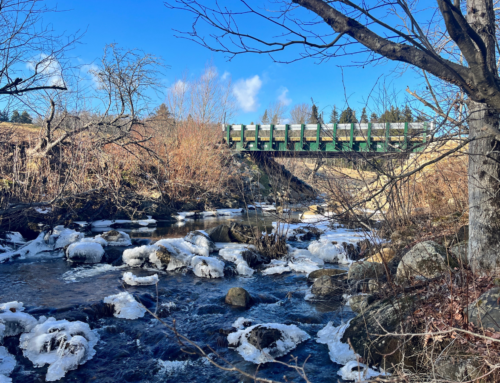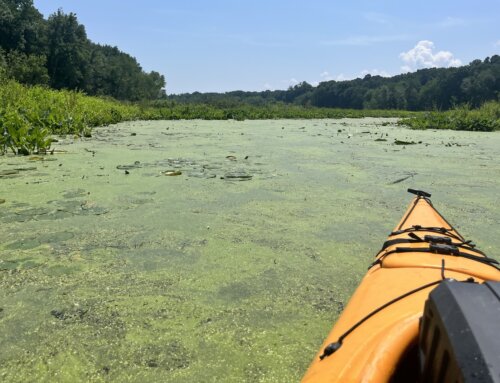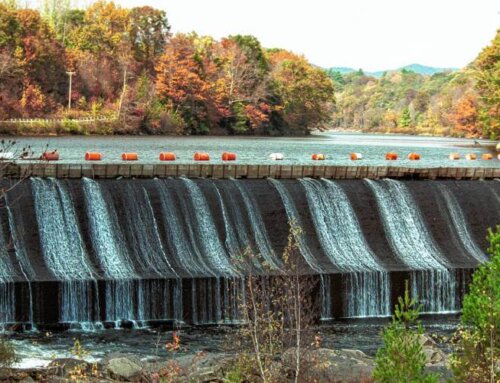The Leaper and the Char:
Trout in the CT River Watershed
MAY 2009 – Fish have been on the earth for 400 million years and have always looked like fish. Their basic physiology allows them to deal with the physical properties of water. Water is inelastic, dissolves gasses and changes temperature more slowly than air. Fish are cold blooded, breath through gills, have float bladders to maintain neutral buoyancy and have a streamlines bullet shape that allows them to cut through water. Survival then as now depends on habitat niche, size, basic physiology and for these fish of the Connecticut River watershed, clean well oxygenated water.
There of course have been evolutionary steps from the primitive trout that has lead in the modern era to the species we find in the Connecticut River Watershed. The species we have now are either Salvelinus or Salmo. Both species are trout but Salmo according to the scientists is the more evolved of the trout.
There are 3 members of the Salvelinus family in the watershed. Salvelinus means char. There is the brook trout, the lake trout and the Sunapee trout.
Brook trout, Salvelinus fontinalis, the ubiquitous “square tail” is found throughout our watershed wherever there is clear cold well oxygenated water be it in lakes, streams or rivers. The Latin name fontinalis means char that lives in springs and that pretty much captures the species main demand for habitat conditions, cold water. They are found naturally from Georgia northward to the Arctic Circle. Brookies have been introduced in the Rocky Mountains in the US and Canada, in Europe and as far away as South America. Regardless of where they are the fish never does well if water temperature holds above 68 degrees with 77 degrees being lethal.
The other local native is the lake trout also known as togue. This species name, Salvelinus namaycush means a char that is a dweller of the deep. Its name is an unusual combination Latin and Indian words that rightly describe this fish. Lakers are naturally found north of the line that marks the furthest southern expansion of the last glacier shield. They prefer water temperatures around 50 degrees and do not thrive where water temperature goes above 65 degrees even if they have been introduced as a stocked species. As lake water temperatures rise during the summer this deep water fish will hold as deep as 200+ feet in order to find cooler water.
And then there is the Sunapee trout, little known outside a small region in our watershed but still a distinct member of the Salvelinus family, Salvelinus auroleus is the golden char. It is believed that this fish is a landlocked Arctic char. It is found only in a few lakes in NH and Maine. Although spawning habitat preferences tend to keep lake and Sunapee trout from cross breeding, as of 1974 the only known undiluted population of Sunapee trout was found in Floods Pond in ME. According to NH Fish and Game there are no populations known at this time.
The other trout family is Salmo. Salmo means the leaper. Here in our watershed that family contains the rainbow trout, an import from our western states, the brown trout an import from Europe and the land locked salmon an import from Maine.
The rainbow trout Salmo gairdneri is named after the man who discovered the species, Dr. M. Gairdneri. The native range for this fish is northern Mexico to the Aleutian Islands. There is a related species found in eastern Russia. The rainbow is able to live in the widest range of habitat and water temperature conditions of all of the trout so has become the favorite stocking fish throughout the US. Rainbow trout are now found in 48 of the 50 states.
The Brown trout is named Salmo trutta. Tuttra is Latin for trout so translated the brown is the leaper trout. The fish is native from the Mediterranean basin north to Norway. It was first introduced to the US in the early 1880s and the introductions were not always well received. Stories persist today that on the Battenkill when first introduced there if a fisher caught a brown trout it was tossed up on the shore as a trash fish. Both brown and rainbow trout are long lived fish, 7 to 12 years compared to the 4 year average length of life for the brook trout.
Atlantic and landlocked salmon are the same species Salmo salar. Salmo means the leaper and as a derivative of the word salmo so does salar. So this fish is named the “leaper’s leaper.” Land locked salmon were brought to the Connecticut Lakes in 1866 from the ST Croix River and stocked into New Brunswick Lake. This is the same species as the anadromous Atlantic salmon that migrates up our river every spring but land locked forbearers were trapped in fresh water lakes at the end of the glacier period. They migrate but from lake to stream instead of river to ocean.
These fish are all fun to catch. Each offers particular challenges so get on out there and fish our watershed. In order to catch them you have to be out on our river that offers along with good fishing visual beauty to those who love and use it.
David Deen is River Steward for the Connecticut River Watershed Council. CRC has been an articulate voice for the Connecticut River for more than half a century.







